Towards the interior of the country
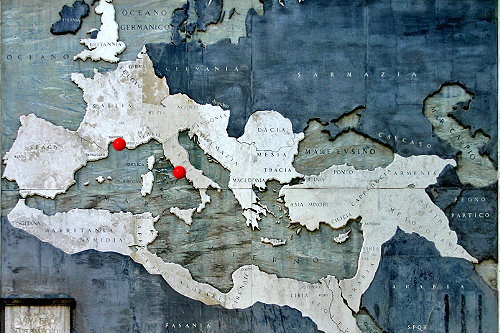 The Naval Museum of Fiumicino has established a collaborative relationship with France, and uses the example of the ancient port at the mouth of the Rhône in the Gulf of Fos-sur-mer, near Marseilles, to give us information on river transport towards the interior.
The Naval Museum of Fiumicino has established a collaborative relationship with France, and uses the example of the ancient port at the mouth of the Rhône in the Gulf of Fos-sur-mer, near Marseilles, to give us information on river transport towards the interior.
In this case, distances inland are much greater than those to be covered from the ports of Ostia since the goods were destined for what was then called Gaul (France and Belgium) and as far as western Germany and Holland.
The Gulf of Fos-sur-mer is located halfway between Spain and Italy and was therefore ideal both as a stopover and as a marshalling yard.
It is still today the seat of important port structures.
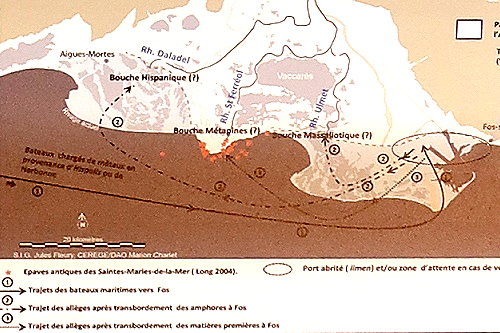
Cargo ships sailed inland against the current with the towage system, i.e. hauled with cables from the shore using oxen or human operators called helciarii.
Of the different branches of the Rhône, the one of Ulmet and the Fossa Mariana were mainly used, and each arm of the river was specialised in the transport of certain commodities.
The Fossa Mariana is a canal built in 102 BC by the consul Gaius Marius. Historical sources describe it as a barrier built to hinder the invasion of the Teutons and Ambrones headed towards Italy.
Another hypothesis assumes that it was intended to facilitate inland traffic, rendered difficult by the swampiness of the area. But it seems unlikely that in a state of war one could think of civil works of this magnitude.
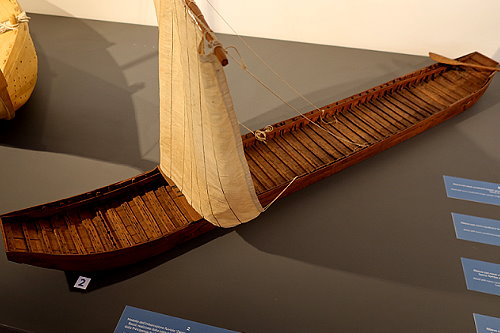
It is certain that later the Fossa Mariana was used for over a millennium for river transport, until it silted up and even its traces were lost. Only recently has the canal been the subject of research.
As we have said, the journeys of the goods from Fos to the internal markets were several orders of magnitude longer than those necessary for the transport from Ostia to Rome; which, we remember, was only about 20 km taking into account the meanders of the river. Consequently, the boats used along the waterways were also different.
The ship museum exhibits the model of a transport ship used on the Rhine in Dutch territory.
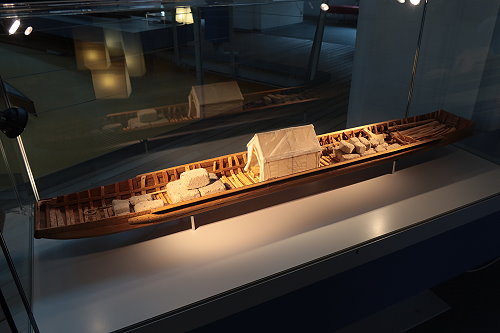 Also in Koblenz, on the course of the Rhine in Upper Rhineland (Germany), models of the ships are on display which were used during the Roman Empire for river transport.
Also in Koblenz, on the course of the Rhine in Upper Rhineland (Germany), models of the ships are on display which were used during the Roman Empire for river transport.
As we can see, they are not different in their basic form, and could not have been, from those still used today if one disregards the construction materials, dimensions and propulsion systems.
Therefore, in those times long gone by there existed a complex network of transport by land and by water. It made goods necessary for daily life and for public works available throughout Europe, whether they were aquatic or terrestrial resources .
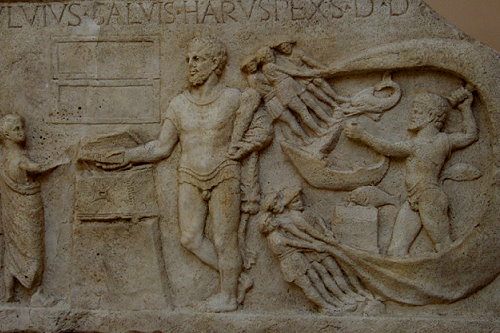 Thus ends this journey which, inspired by the finds and documentation of the Fiumicino Ship Museum, actually led us to "fish" very far away.
Thus ends this journey which, inspired by the finds and documentation of the Fiumicino Ship Museum, actually led us to "fish" very far away.
On the other hand, we know one thing well and are reminded of it by this funerary monument on display at the Museum of Ostia Antica: here we see the surprising results of a fishing trip with a seiner.
When you go fishing you can never know in advance if you will catch something, and what.
But we also know - we already knew but here we have further proof - that the ocean, the sea, the rivers and lakes are our friends.
We owe them due respect, and reciprocate their friendship.
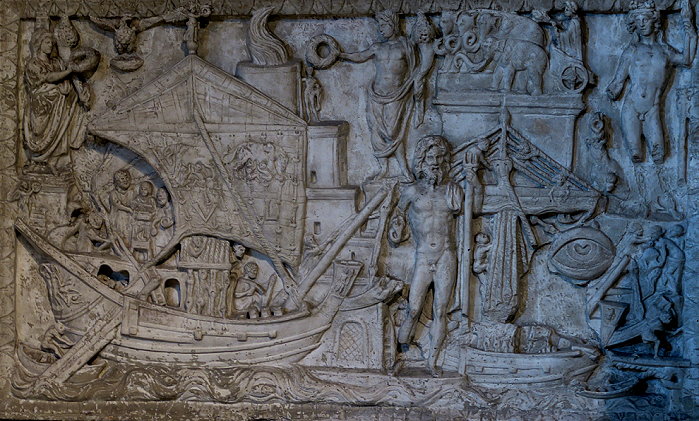
Paolo Bottoni, January 2023
Unless indicated otherwise the photos are by the author








